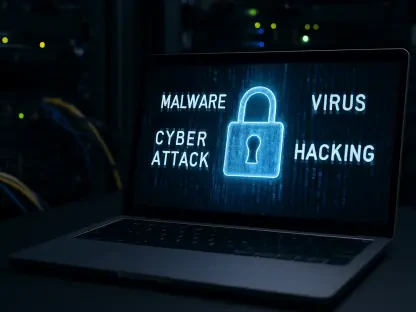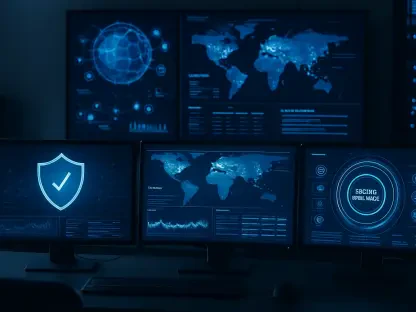As the digital landscape continues to evolve, so do the threats that organizations face in protecting their sensitive data. With the prevalence of hybrid work models and the transition to cloud-based services, the attack surface has expanded dramatically. In 2025, the urgency to safeguard organizational data becomes paramount to maintain the trust of stakeholders and ensure cybersecurity. Here’s how organizations can stay ahead of emerging threats, safeguard their valuable data, and solidify their security postures.
Data Discovery and Classification
A thorough audit of both structured and unstructured data is fundamental to an effective data security strategy. Organizations must use advanced, AI-driven tools to automatically discover and classify sensitive data, including Personally Identifiable Information (PII) and Protected Health Information (PHI), to streamline processes and identify potential risks quickly. This approach ensures that any vulnerabilities are addressed proactively, preventing costly breaches and ensuring compliance with relevant regulations. By incorporating data discovery and classification, organizations lay a strong foundation for their security framework.
Protecting an organization’s data begins with understanding precisely what data exists and where it resides. Leveraging AI to classify and categorize data helps highlight areas of risk and align security measures with compliance requirements. This proactive approach is crucial for identifying and mitigating vulnerabilities before they can be exploited by cyber threats. Accurate data mapping, coupled with continuous monitoring, allows security teams to respond swiftly to any suspicious activities, thereby improving the overall security posture of the organization.
Least Privilege Access
In ensuring data security, the principle of least privilege access plays a critical role. This principle dictates that users are granted the minimum levels of access – or permissions – necessary to complete their job functions, reducing the risk of both internal misuse and external exploitation. Advanced solutions can map user roles against their access permissions to identify and remediate unnecessary or risky levels of access. This practice helps minimize the possibility of insider threats and unauthorized access, which can be particularly prevalent in hybrid work settings.
Deploying least privilege access is essential in environments where remote work is common, as it significantly reduces the risk of inappropriate data sharing and unauthorized access. By finely tuning access controls and regularly auditing permissions, organizations can ensure that only the necessary individuals have access to sensitive information. This proactive management of user privileges is an integral component of a comprehensive security strategy, designed to mitigate risks and protect against potential data breaches.
Continuous Monitoring for Anomalous Behavior
In the face of increasingly sophisticated cyber threats, continuous and real-time monitoring is indispensable for early threat detection and swift response. AI-driven governance tools analyze data access patterns to identify unusual behaviors and potential threats. Real-time monitoring not only strengthens security but also offers valuable insights into user behavior, leading to more informed decision-making. By implementing continuous monitoring, organizations can detect sophisticated attacks often executed within seconds, allowing them to react in real time and prevent significant damage.
The integration of continuous monitoring tools into the security infrastructure enables organizations to keep a constant watch over their data environments. These tools can detect anomalies that human monitors may overlook, reducing the window of opportunity for attackers. By leveraging AI and machine learning, organizations can automate the analysis of vast data sets, ensuring that any deviations from normal behavior are flagged and investigated promptly. Continuous monitoring is thus a critical aspect of maintaining robust data security in the modern threat landscape.
Automated Risk Remediation
Automated risk remediation is instrumental in addressing identified vulnerabilities promptly without the need for manual intervention. This approach helps prevent delays in response, which are often costly and risky. Automated tools adjust access controls, revoke permissions, and prevent unauthorized data sharing based on extensive data-driven insights. This automation alleviates the workload on IT teams and minimizes the chance of human error, allowing security teams to focus on strategic initiatives rather than routine tasks.
Automating risk remediation processes ensures that security measures are applied consistently and quickly, reducing the time it takes to react to potential threats. By doing so, organizations can mitigate vulnerabilities before they can be exploited. This proactive stance is critical in maintaining a strong security posture, as it ensures that security protocols are always up to date and adapted to the ever-changing threat landscape. Automation in risk remediation is thus an essential strategy for enhancing the efficiency and effectiveness of security operations.
Zero Trust Implementation
The zero trust model has become increasingly vital as the use of hybrid work models and cloud services expands. This model operates on the principle that no user or device should be trusted by default, regardless of their location within or outside the network. Implementing zero trust requires significant planning and investment, particularly in integrating the model across diverse systems, legacy infrastructure, and cloud environments. Modern governance tools facilitate seamless verification processes, ensuring enhanced security without disrupting workflows.
Adopting a zero trust approach provides a robust framework for safeguarding data in an expanding threat landscape. This model requires continuous verification of user and device credentials, applying strict access controls, and monitoring user activities for signs of malicious behavior. By assuming that every interaction could be potentially harmful, organizations can enforce more stringent security measures, reducing the likelihood of breaches and unauthorized access. Implementing zero trust is essential for maintaining secure operations as the attack surface continues to grow.
Regulatory Compliance
Staying current with strict data protection regulations is a fundamental aspect of safeguarding organizational data. Compliance with regulations such as GDPR, CCPA, and HIPAA not only helps avoid legal and financial penalties but also builds trust with stakeholders by demonstrating a commitment to responsible data stewardship. Proactively addressing compliance requirements ensures that organizations align their security practices with the highest standards, providing a robust framework for protecting sensitive data.
Leveraging tools that streamline compliance management is crucial for organizations to keep pace with evolving regulatory landscapes. These tools help organizations track and document compliance efforts, ensuring that all data handling procedures meet legal standards. Proactively managing compliance allows organizations to avoid the pitfalls of non-compliance, such as data breaches and subsequent penalties. Additionally, demonstrating adherence to regulations fosters trust among customers, partners, and regulatory bodies, reinforcing the organization’s reputation for security and integrity.
Endpoint Security
Endpoints, including laptops, smartphones, servers, and IoT devices, represent common weak points in an organization’s security perimeter. Protecting these devices is crucial, as they are often targeted by cyber attackers. Deploying antivirus software, firewalls, and encryption remains fundamental to securing endpoints. Additionally, Endpoint Detection and Response (EDR) solutions play a vital role in identifying and isolating compromised devices to prevent network-wide impacts, forming an essential part of a multi-layered defense strategy.
Effective endpoint security involves continuously monitoring and securing all devices connected to the organization’s network. EDR solutions can detect and respond to threats in real-time, mitigating risks before they can affect the broader network. By securing endpoints, organizations can prevent attackers from exploiting these devices as entry points into the network. This multi-layered approach to defense ensures that even if one layer is breached, additional security measures are in place to protect sensitive data.
Security Awareness Training
Regular and engaging security awareness training for employees is a cornerstone of an organization’s data protection strategy. Social engineering attacks, such as phishing, exploit human error, making employee education vital. Interactive training sessions, phishing simulations, and gamified platforms help employees recognize and respond to threats effectively. By transforming employees from potential liabilities into proactive defenders of data, organizations can significantly bolster their security posture.
Security awareness training should be an ongoing effort, regularly updated to reflect new and emerging threats. Interactive and practical training methods enhance employee comprehension and retention, making them more effective at recognizing suspicious activities. By emphasizing the importance of security best practices, organizations can foster a culture of vigilance and responsibility. This human-centric approach to security complements technological measures, addressing the human element that is often targeted by cyber attackers.
Multi-Factor Authentication (MFA)
Passwords alone are no longer sufficient to protect against unauthorized access, making Multi-Factor Authentication (MFA) a critical component of modern security strategies. MFA requires multiple verification factors, such as something known (password), something owned (security token), and biometrics. By integrating MFA with systems, organizations can add extra layers of protection, making it significantly more difficult for attackers to gain access, even with compromised credentials.
Implementing MFA ensures that access to sensitive data and systems is controlled through multiple barriers, which greatly reduces the likelihood of unauthorized intrusions. This added security measure is crucial for preventing breaches and protecting valuable information from exploitation. By requiring multiple forms of authentication, MFA provides an additional level of security that goes beyond traditional password protection, enhancing the overall resilience of the organization’s security infrastructure.
Incident Response Plan (IRP)
Acknowledging that no system is completely foolproof, having a robust Incident Response Plan (IRP) is imperative for handling data breaches and security incidents quickly and effectively. An effective IRP includes defined roles, communication protocols, and action sequences to ensure a coordinated response. Regular testing and updates of the IRP, based on emerging threats, enhance its effectiveness, ensuring the organization is prepared to respond promptly and mitigate the impacts of any breaches.
A well-defined IRP allows organizations to manage incidents effectively, minimizing downtime and maintaining operational resilience. By clearly delineating roles and responsibilities, and establishing communication protocols, the IRP ensures that all relevant parties are informed and can act swiftly in the event of a breach. Regularly testing and refining the IRP ensures its efficacy and keeps it updated with the latest threat intelligence, enabling organizations to respond to incidents with agility and confidence.
Future Considerations and Next Steps
As the digital landscape keeps changing, the threats organizations face in protecting their sensitive data also evolve. With more hybrid work models and the switch to cloud-based services, the attack surface has expanded significantly. In 2025, the need to protect organizational data becomes crucial for maintaining stakeholder trust and ensuring cybersecurity. Organizations must stay ahead of emerging threats to safeguard their valuable information and strengthen their security postures. To achieve this, they can implement robust security measures such as continuous risk assessments, employee training on cybersecurity best practices, and employing advanced security technologies. By doing so, organizations not only protect their data but also maintain the confidence of customers, partners, and stakeholders. Adapting to the ever-changing digital landscape is essential to stay resilient against rising threats. This approach will ensure they are prepared to face any security challenges that come their way.









